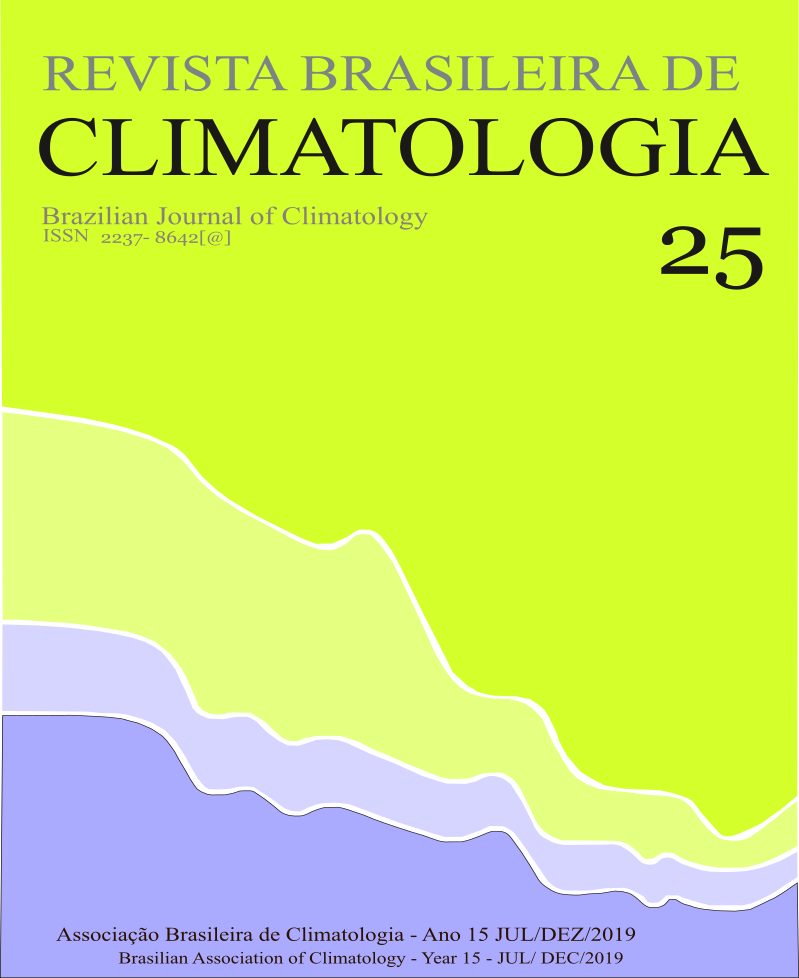THE ROLE OF SEA SURFACE TEMPERATURE IN THE RAINFALL REGIME IN SUB-SAHARAN AFRICA
DOI:
https://doi.org/10.5380/abclima.v25i0.60936Palavras-chave:
Precipitation, tropical rains, sub-Saharan Africa, climate variabilityResumo
This study sought to understand the role of the surface temperatures of the ocean and continent in the variability of rains in sub-Saharan Africa, contributing to the improvement of weather forecasting and prevention of extreme events in the region.Through perturbation experiments using a climate model of intermediate complexity,we seek to understand the roles of sea surface temperature (SST) of ocean basins around the sub-Saharan Africa and the surface temperature in Southern Africa, in defining the spatial distribution of Spatial distribution of rainfall in the region of action of Intertropical Convergence Zone (ITCZ) which assumes an approximate shape of an "inverted S" during the quarter December-January-February in this continent, due to connections with other systems of the same scale. By comparing the regional perturbation experiments of SST and the continental surface temperaturewith respect to the climatology we came to the conclusion that the SST in the Atlantic and Indian Oceans have major contribution in the formation of "inverted S" of precipitation than the continent's surface temperature. Comparing these two ocean basins, the Indian SST has predominant role in the climate variability in sub-Saharan Africa, modulating the position and intensity of the ITCZ and therefore the formation of their spatial distribution across the continent.Downloads
Publicado
Como Citar
Edição
Seção
Licença
A aprovação dos artigos implica a aceitação imediata e sem ônus de que a Revista Brasileira de Climatologia terá exclusividade na primeira publicação do artigo. Os autores continuarão, não obstante, a deter os direitos autorais. Os autores autorizam também que seus artigos sejam disponibilizados em todos os indexadores aos quais a revista está vinculada.
Os autores mantém seus direitos de publicação sem restrições
A Comissão Editorial não se responsabiliza pelos conceitos ou afirmações expressos nos trabalhos publicados, que são de inteira responsabilidade dos autores.
A Revista Brasileira de Climatologia oferece acesso livre imediato ao seu conteúdo, seguindo o entendimento de que disponibilizar gratuitamente o conhecimento científico ao público proporciona maior democratização do conhecimento e tende a produzir maior impacto dos artigos publicados. Os artigos publicados na revista são disponibilizados segundo a Licença Creative Commons CC-BY-NC 4.0 (https://creativecommons.org/licenses/by-nc/4.0/). Segundo essa licença é permitido acessar, distribuir e reutilizar os artigos para fins não comerciais desde que citados os autores e a fonte. Ao submeter artigos à Revista Brasileira de Climatologia, os autores concordam em tornar seus textos legalmente disponíveis segundo essa licença




